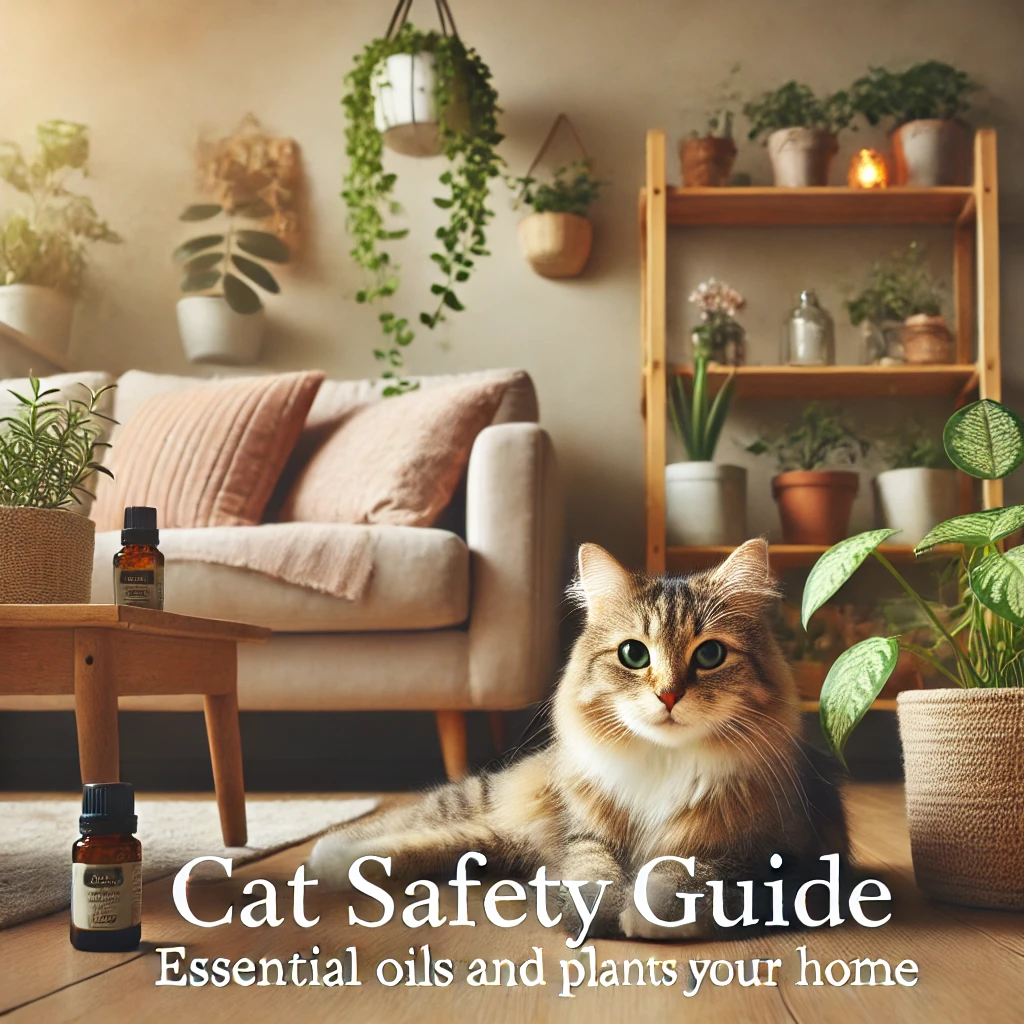Cat Safety Guide: Essential Oils and Plants in Your Home
As a cat owner, creating a safe environment for your feline friend is crucial. This guide will help you navigate the potential risks of essential oils and plants in your home.
Essential Oils and Cats
Cats are particularly sensitive to essential oils due to their liver’s inability to process certain compounds. Here are some key points to remember:
-
Essential oils to avoid around cats:
-
Eucalyptus
-
Tea tree oil
-
Ylang-ylang
-
Citrus oils
-
Pine oils
-
-
Essential oils considered safer for cats (when used properly):
-
-
Lavender:
-
Known for its calming effects
-
Can help reduce stress and anxiety in cats
-
Promotes relaxation
-
-
Chamomile (German and Roman):
-
Has soothing properties
-
Can help calm nervous cats
-
-
Frankincense:
-
Supports the immune system
-
Has anti-inflammatory properties
-
-
Cedarwood:
-
Promotes relaxation
-
May help repel fleas
-
-
Copaiba:
-
Has anti-inflammatory properties
-
May help with pain relief
-
-
Rosemary:
-
Can help repel fleas
-
May have anti-inflammatory effects
-
-
Helichrysum:
-
Known for its healing properties
-
May help with skin irritations
-
-
Petitgrain:
-
Has calming effects
-
May help reduce anxiety
-
It’s important to note that while these oils are considered safer, they should still be used with caution and in proper dilutions. Always consult with a veterinarian before using any essential oils around cats, as individual cats may have different sensitivities. Additionally, ensure proper ventilation and never apply essential oils directly to a cat’s skin or fur without professional guidance.
-
-
-
Safety measures:
-
Store oils out of your cat’s reach in securely fastened containers
-
Wash your hands after handling essential oils
-
Use only heavily diluted essential oils
-
Keep cats out of rooms with diffusers and ensure proper ventilation
-
Avoid cleaning with products containing essential oils
-
Always consult with a veterinarian before using any essential oils around your cat
-
Monitor your cat’s reaction when introducing new oils, even those considered safer
-
Pet-Safe Plants for Your Home
While some plants can be toxic to cats, many are safe and can beautify your space without risk. Here are some cat-friendly options:
-
Boston Fern (Nephrolepis)
-
African Violet (Saintpaulia)
-
Spider Plant (Chlorophytum)
-
Areca Palm (Dypsis lutescens)
-
Ponytail Palm (Beaucarnea recurvata)
-
Purple Waffle Plant (Hemigraphis alternata)
Creating a Cat-Safe Environment
To ensure your cat’s safety:
-
Research plants before bringing them home
-
Place plants out of your cat’s reach
-
Monitor your cat’s behavior around new plants
-
Provide cat-specific plants like cat grass as a safe alternative
-
When using essential oils, start with small amounts and observe your cat’s reaction
-
Use essential oils in well-ventilated areas
-
Never apply essential oils directly to your cat’s fur or skin
By following these guidelines, you can create a beautiful, fragrant home that’s also safe for your feline companion. Remember, when in doubt about a plant or essential oil’s safety, consult your veterinarian. Every cat is unique, and what works for one may not be suitable for another.


